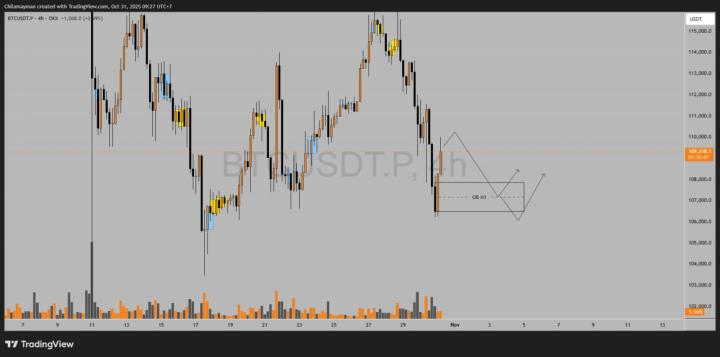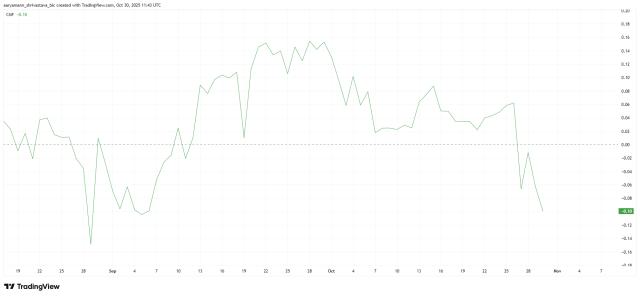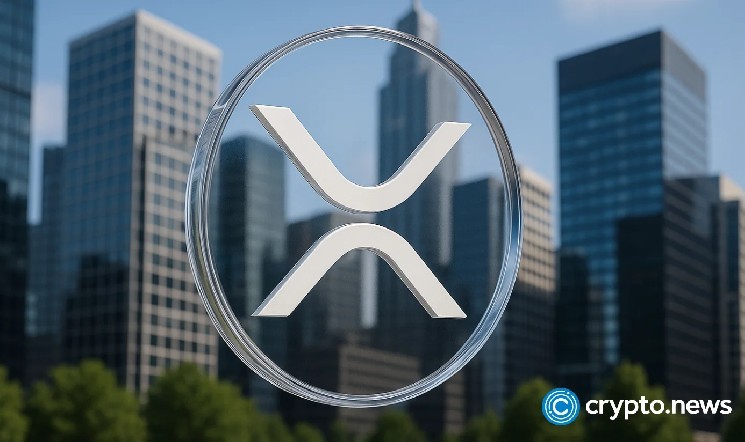Under the compliance trend, the encryption industry may usher in a golden age
As we enter 2025, the crypto industry has reached a real turning point.
In fact, over the past decade, the market has been groping forward in a regulatory vacuum and gray experimental area. Although it has spawned a huge scale of transactions, it has never been able to enter the mainstream of compliance.
Now, as the regulatory framework becomes clearer, the industry has finally entered a new stage.
- In the United States, the Financial Innovation and Technology Act (FIT21) passed by Congress established a framework for crypto asset regulation and clarified the division of labor between the SEC and the CFTC; at the same time, the Clarity for Payment Stablecoins Act has become one of the most watched legislations, requiring that stablecoin issuance must have 1:1 reserves and qualified custody, and is currently under review.
- The EU's Markets in Crypto-Assets (MiCA) Regulation will come into full effect in 2025, bringing stablecoins, crypto service providers and token issuance into a unified regulatory system, providing institutional protection for the European market for the first time.
- Asian financial centers such as Singapore, Hong Kong, and Japan are also simultaneously promoting compliance paths for stablecoins and virtual assets, and traditional banks and financial institutions have begun to implement pilot programs.
The clarity of policies is reshaping market expectations.
We see that after shrinking in 2022-2023, the market value of stablecoins rebounded to more than US$150 billion in early 2025, and compliant stablecoins gradually became the main force in cross-border settlement.
At the same time, institutional funds quickly entered the market:
BlackRock's spot Bitcoin ETF was approved at the end of 2024, attracting billions of dollars in capital; Visa and PayPal also began to embed USDC and PYUSD directly into cross-border settlement and e-commerce payment networks.
These signals collectively indicate that the crypto industry is shifting from a "speculative narrative" to an "institutional dividend-driven" approach, and the uncertainties that have long plagued the market, including concerns about whether users can use it in compliance, whether institutions can invest in compliance, and whether financial giants can access it in compliance, are gradually being eliminated.
Changes in the global e-commerce sales share in the retail market from 2015 to 2027
Against this backdrop, the development logic of Web3 is also shifting: from relying on speculation and liquidity narratives to an application layer capable of supporting real-world consumption and payment scenarios. With the convergence of institutional opportunities and a trillion-dollar consumer market, the consumer economy narrative may become the starting point of a new golden age.
Consumer narratives will become the new “traffic hub”
On the other hand, while exchanges and public blockchains remain the primary entry points for Web3 users—the former facilitates the buying and selling of assets, while the latter provides the infrastructure for application and development—they still lack a truly accessible entry point for high-frequency consumer payments. In other words, while users can easily purchase crypto assets on exchanges today, it's difficult to use these assets directly for daily payments.
This gap is particularly evident in the data.
Global retail payments have surpassed tens of trillions of dollars annually, encompassing a wide range of scenarios from daily retail to cross-border e-commerce. In contrast, while on-chain payments and stablecoin settlements have experienced rapid growth in recent years, their penetration rate remains below 5%. While blockchain has accumulated a vast asset base, a significant gap remains between it and the real economy's most critical interface: consumer payments.
E-commerce market sales growth forecast
It is this fault that has become the biggest bottleneck in the development of the industry.
On the one hand, on-chain assets lack high-frequency circulation scenarios, and their use value is difficult to truly release;
On the other hand, the real consumption system is firmly locked in by the traditional financial network and regulatory system, which means that users always lack a bridge between "on-chain wealth" and "daily life."
The regulatory shift since 2025 has opened up both policy and capital for Web3 payment applications. Compliant stablecoins are gradually gaining institutional recognition, traditional financial giants are beginning to explore on-chain settlement, and institutional investors are actively seeking infrastructure capable of handling real-world payment traffic. This means that migrating real-world consumption scenarios to blockchains will become the most promising narrative direction in this round of market development.
In such a landscape, consumer payments will become a strategic gap, and the ecosystem that first establishes user habits and network effects on this high-frequency entry point is expected to become the true "traffic hub" in the golden age of Web3.
In this context, PSP, as a set of on-chain infrastructure for the consumer economy, is expected to adapt to new industry trends and usher in the next stage of the trend.
PSP: Building an integrated consumption network on and off the chain
PSP (Pre-Spending Power) is an on-chain infrastructure for the consumer economy. Its design goal is to integrate consumer behavior, credit accumulation, and asset circulation into a single chain through a systematic architecture, building a consumer-driven ecosystem that can support long-term growth.
In the traditional system, payment, points, credit, financing, supply chain fulfillment and other links are often decentralized, and different institutions have different data and value capture points.
PSP attempts to break down this fragmentation and reunite them on-chain. Leveraging the transparency and immutability of blockchain, the ownership confirmation mechanism for real-world assets (RWAs), DePIN's distributed node network, and AI-powered data optimization, PSP enables previously isolated links to operate under a unified framework. This allows every consumer transaction to become a traceable data record and asset certificate, reusable in subsequent scenarios.
Focusing on the PSP system, the system as a whole consists of five core modules:
- Payment networks and debit cards : These are the most intuitive entry points for users into the ecosystem. Users can pay with stablecoins and digital assets, enabling seamless settlement in e-commerce and retail, as well as cross-border transactions. Physical and virtual debit cards further lower the barrier to entry for users, making on-chain assets a true part of everyday consumption.
- Loyalty and Points Systems : Traditional points systems are often closed and illiquid. PSPs introduce PowerPennies, which transform spending records into verifiable digital assets. These assets can not only be used for spending but also traded, pledged, and even linked to financial products. This transforms points from ancillary rights into real assets for users.
- Credit and Finance Module : In the PSP ecosystem, user consumption and interaction behaviors are accumulated into on-chain credit profiles. This enables the platform to support a richer range of consumer financial services, such as BNPL (buy now, pay later), NFT pre-sale contracts, and mortgage financing. For users, this means more financing channels; for merchants, it means more efficient risk management and credit support.
- DePIN Fulfillment Network : Payments are not just about the flow of funds; they also involve the fulfillment of goods and services. PSPs integrate warehousing, logistics, and distribution nodes into a decentralized incentive system, allowing the fulfillment process to be tracked and verified on-chain. This increases transparency while reducing costs caused by intermediaries and information asymmetry. This mechanism is particularly effective in improving efficiency and trust in cross-border transactions.
- AI Intelligent Engine : PSPs leverage artificial intelligence to achieve a higher level of optimization. AI can provide personalized recommendations based on user profiles and transaction data, assist with credit assessment and risk management at the financial level, and provide dynamic spending and savings recommendations at the asset management level. This capability makes consumption no longer a passive behavior, but a process that dynamically adapts to user needs and market conditions.
Based on this system, PSP can produce practical application effects in multiple dimensions.
For users, it provides a channel to extend on-chain assets into daily life.
Whether it's e-commerce shopping, offline retail, or payments and settlements for cross-border travel, stablecoins and digital assets can be used smoothly through the debit card system, simplifying the user experience and making on-chain assets more clearly defined for consumption. Furthermore, the integration of points and credit systems means that consumer behavior is no longer limited to one-time expenditures, but instead continuously generates verifiable rights and interests, which are accumulated over the long term in the form of digital assets, thereby enhancing the value of consumer behavior in personal asset allocation.
For merchants and service providers, the role of PSP is reflected in two aspects: data and financial instruments.
The on-chain accumulation of transaction data provides a more objective basis for credit assessment and risk control, enabling merchants to formulate financing and marketing strategies based on real user behavior. The introduction of modules such as BNPL or NFT pre-sales also allows merchants greater flexibility in capital turnover and sales methods. Furthermore, the application of the DePIN fulfillment network provides transparent tracking and incentive mechanisms for warehousing, logistics, and distribution, thereby improving supply chain efficiency and reducing the risks and additional costs associated with information asymmetry in cross-border transactions.
At a broader ecological level, the PSP architecture creates entry opportunities for different types of participants.
Logistics nodes, small service providers, content creators, and others can access the network and earn corresponding incentives by providing services, fulfilling contracts, or contributing content. This mechanism increases participation and diversity in the ecosystem, allowing value creation to be collaboratively achieved across multiple parties, rather than limited to the platform itself. As the number and types of participants increase, the overall utility of the ecosystem continues to grow, and network effects will gradually amplify.
Therefore, from the fundamental perspective of PSP, it not only solves the execution problem of consumer payments, but also links consumer behavior, credit system and asset management through an integrated architecture, forming a complete consumer economic closed loop covering users, merchants, service providers and institutions, bringing higher consumption added value to users, providing more reliable collaboration tools for merchants and service providers, and creating a path for entry and benefit for a wider range of participants.
New changes brought by PSP
In fact, when reviewing past rounds of industrial evolution, each new technological narrative ultimately finds a way to capture high-frequency and pervasive economic variables. The Industrial Revolution reshaped the social division of labor through increased productivity, while the internet has driven new business models by connecting information and people.
Over the past few years, Web3 has undergone a multi-layered evolution. The earliest wave centered on the financial layer, with DeFi exploring asset liquidity and transparency through trading, lending, and derivatives experiments. At the cultural and social layer, NFTs, DAOs, and decentralized social networks have attempted to assetize identities, organizations, and symbols. Simultaneously, infrastructure continues to improve, with public chain expansion, cross-chain communication, privacy-preserving computing, and oracles enabling more complex application scenarios. The common thread underlying these narratives is the desire to migrate existing human activities—financial, cultural, organizational, and collaborative—to new institutional and technological frameworks.
From this more macro perspective, the next variable becomes obvious: consumption.
It is not only the largest and most universal behavior in the economy, but also the hub connecting finance, culture and collaboration. Putting consumption, the most basic economic variable, on-chain may be the key to pushing Web3 from early experiments to large-scale applications.
From a macro perspective, consumption has three characteristics that give it unique potential when migrating on-chain.
- Global retail consumption accounts for a large portion of GDP, far exceeding the size of financial derivatives;
- Unlike occasional asset transactions, consumption is a daily behavior that naturally brings about network effects;
- Consumption is not only a one-time expenditure, but also generates points, credit, contracts and data, which can be further confirmed and utilized on the chain.
These attributes determine that once consumption migrates to the chain, it will not only bring traffic, but also composable financial and data assets.
Similarly, as we mentioned above, macro market trends are also providing conditions for this transformation.
- At the institutional level, the United States, Europe, and Asia are clarifying the regulatory framework for stablecoins and payments;
- At the digital level, e-commerce, cross-border retail, and online content have become important engines of global growth, with user payment and consumption data highly concentrated;
- At the financialization level, BNPL, points financialization and pre-sale models have been verified in the Web2 environment, indicating that the demand for consumer finance and user incentives exists stably.
The combination of these three forces has made "assetization of consumer behavior" an evolutionary direction that is more in line with the logic of the times.
Looking back at the development experience of Web2, changes often occur when existing paths are optimized and reconstructed.
The success of Alipay and WeChat Pay stems from gradually migrating payment habits to mobile devices through rewards points, red envelopes, and social interactions within familiar scenarios. Amazon Prime relies on rewards points and a convenient logistics experience to lock users firmly into its e-commerce closed loop. These examples demonstrate that users won't change their habits for unfamiliar narratives, but if the added value and convenience are significant enough, they will quickly migrate.
Based on this experience, the PSP approach is to simultaneously lower the threshold and increase benefits:
The front-end provides card and wallet interfaces, allowing users to complete payments in existing scenarios. The back-end converts payment behavior into points, credit, and composable assets, making consumption on the user side no longer a "spending destination" but a starting point for sustainable benefits. As user usage increases and credit data becomes more complete, merchants' financial services and risk management capabilities also strengthen. As merchants and service providers join, the richness of products and services increases, further strengthening user retention. This cycle amplifies network effects, positively incentivizing every participant in the consumption chain.
From a macro perspective, the significance of consumer migration lies in the fact that PSP is the first time that Web3 has shifted from asset gaming to mass economy.
Over the past few years, the industry narrative has revolved around a small number of investors and speculative behavior. However, only when consumption, the most ubiquitous variable, is incorporated into the on-chain system will Web3 truly have the potential to reach a large user base. In other words, the migration of consumer payments is not only a new business model but also a watershed that distinguishes the past "speculative narrative" from the future "application narrative."
Therefore, PSP is redefining the role of consumption in the on-chain economy. By integrating payment, credit, points, fulfillment, and asset management into a single architecture, PSP makes consumer behavior traceable, accumulative, and reusable for the first time.
It not only solves the problem of "how to pay," but also opens a new path for "consumption as an asset, consumption as credit." This mechanism transforms consumption from a single point of expenditure into an underlying engine that drives financial services, supply chain collaboration, and ecosystem growth. In other words, the new transformation brought about by PSP is to make consumption an infrastructural variable of Web3, allowing the industry to move from relying on speculative narratives to an era of long-term applications supported by real economic behavior.
From a macro perspective, PSP is backed by the world's largest consumer market, which is the largest economic entity.
Retail consumption has long accounted for over 60% of global GDP. In 2023 alone, global retail sales exceeded $30 trillion, with the share of cross-border e-commerce and digital retail continuing to grow. The cross-border e-commerce market is projected to reach $7-8 trillion by 2030. This means that consumption is not only the core engine of the global economy but also the most universal and high-frequency behavioral variable.
In such a multi-trillion dollar market, even if only a tiny proportion is digitized, assetized, and migrated to the chain, the incremental value released will be enough to reshape the industry landscape.
Unlike previous market stories driven by speculation, the value of PSP comes from its direct anchoring in the world's most extensive economic activity, namely consumption. Because of this, it precisely meets the long-term migration needs of a macro market.






